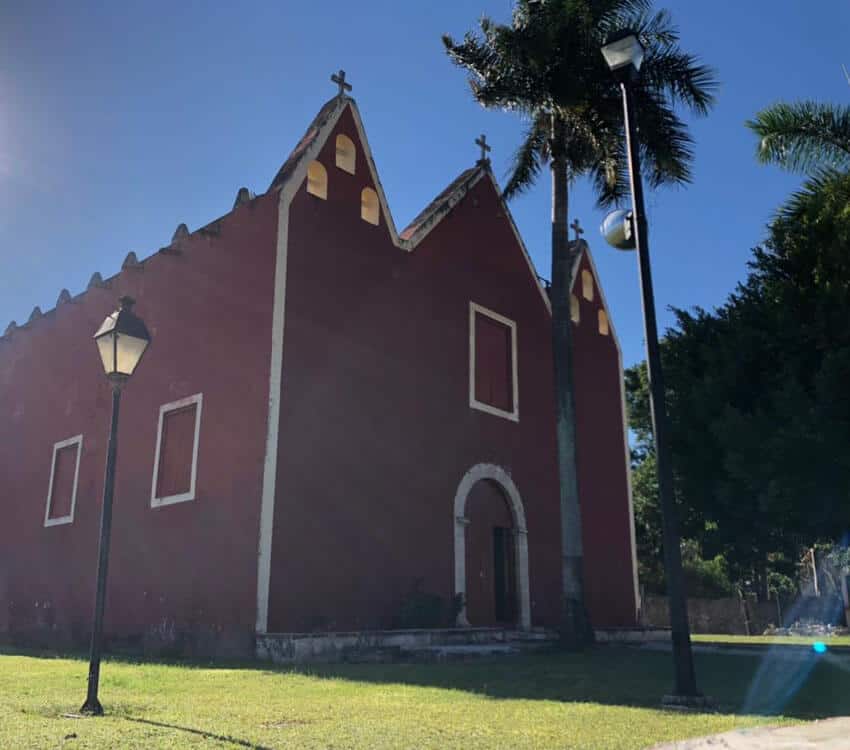When the Black Pox hit the Yucatán Peninsula at the dawn of the 20th century, entire communities were all but obliterated. One exception was Pich, a small Mayan town in the heart of Campeche where the inhabitants found themselves bereft of neighboring communities but with almost all of its population still intact.
This is a story that they tell their children here today: how they come from a lineage of survivors and how they are survivors too.
On a brisk winter morning (by southern Mexican standards), Manuel Jesús Castillo Tec pulls up on an Italika FT125 scooter in an undone olive guayabera shirt over a white vest. He is the mayor of Pich’s community of stalwarts, and his open shirt speaks to his affable and easygoing demeanor, though his thick-rimmed glasses suggest an underlying reflectiveness that must surely have aided him in his time as the town’s commissioner before he took office as Pich’s mayor in October.
“I know everybody here,” he says of the town’s 3,000 inhabitants, “and I know their parents, their grandparents. We have always existed as a unit of people who survive together, so we hand down our tales and our traditions. I’ve been lucky enough that all of this has added up to trust in me as mayor.”
Indeed, as he rides at low speed around the town, pointing out various landmarks and curiosities, he frequently stops to speak to other residents and his hat seems to bob incessantly as he acknowledges the people he passes. The vibe emanating from Castillo Tec is all over Pich: there is something ineffable in the colors of the buildings that seems to inspire good feeling, and when he pulls up outside the gates to the town’s aguada, it seems like a scene from a tranquil postcard.

The aguada, he explains, is a remnant of the old Mayan pre-Hispanic water management techniques that run underneath the town. Today, schoolchildren with clipboards buzz around a large tree.
“It is wonderful to see the children outside learning about the aguada,” Castillo Tec says, “because as well as teaching them their ancestry, it fosters a sense of stewardship for their local environs, which seems to be [becoming] lost. We watch children flee to bigger cities — Campeche, for example — in search of opportunities, when the reality is that we have them right here; we just need to show people.”
Castillo Tec is positive about the future of the town. He is looking to build on his experience as the previous administration’s commissioner by putting the town back on the map.
Towns all over Mexico are embracing the past in order to look to the future, but under Castillo Tec’s guidance, it is very likely that the obscure Maya community of Pich will rediscover its place in the modern world within a few short years.
He is leaning on the help of a local historian — Pich’s promoter of culture — José María Cabrera Contreras. Cabrera is helping to curate the history of Pich; his encyclopedic knowledge of the monuments in the town begins to spill out the instant he sets foot inside the town’s centerpiece: La Iglesia de Las Tres Cruces, or The Church of the Three Crosses.
Cabrera explains that the church is a former 18th-century Franciscan convent — itself constructed on the site of an old pre-Hispanic building. The National Institute of Anthropology and History (INAH) restored it in the late 20th century.

The church is built in the same style as the majority found in this region: a large, monochrome building in bright red that dominates the central square, boasting lofty ceilings and a larger-than-life-size statue of Christ looking penitently at the floor across from the main entrance.
“This place has fulfilled, at more than one point, the role of integrating a number of different identities into the mesh that we call pichuleño,” Cabrera explains, using the word by which people from Pich refer to themselves.
Beneath the statue of Christ, Cabrera points to three green crosses on the altar: “a symbol of our identity,” he states matter of factly.
The crosses, he explains, represent the Caste War (1847–1901), a rebellion of the indigenous inhabitants of the southern and eastern parts of the Yucatán Peninsula against the wealthy non-indigenous Mexicans. It’s another patch in the quilted fabric of Pich’s history that left thousands dead on the peninsula.
The Maya groups who worked in Campeche’s henequén agave haciendas used the crosses as a banner to protest the imposition of Christian religious beliefs.
“Now,” Cabrera muses, “the crosses represent what gives Pich its character: the population is a mix of Mayan men and women who cohabit with settlers from the central and northern regions of the country and Guatemalan refugees.”

Castillo Tec and Cabrera are using the spaces and identities that already exist in Pich to showcase what gives the town its incommunicable sense of beguilement. Both men are hoping that the qualities which have historically contributed to the obscuration of the vivid histories of rural Mexican towns such as Pich will be the very things that present unique opportunities for change.
Shannon Collins is an environment correspondent at Ninth Wave Global, an environmental organization and think tank. She writes from Campeche.
